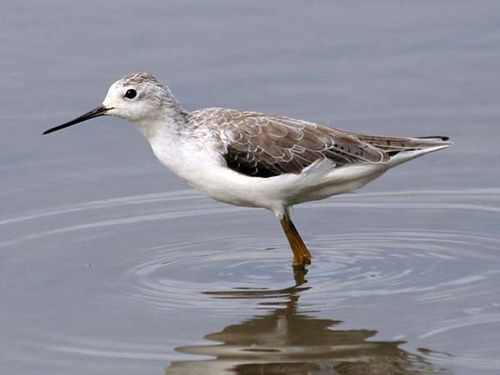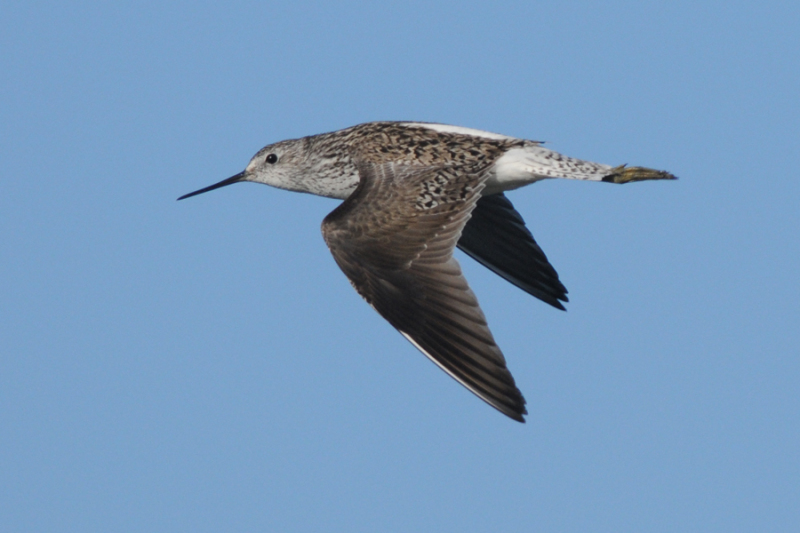�
�
Tringa (Tringa) stagnatilis
Marsh Sandpiper
Kingdom
Animalia
Phylum
Chordata
Class
Aves
Order
Charadriiformes
Family
Scolopacidae
Genus
Tringa
Species
Tringa (Tringa) stagnatilis
Status
least concern
Colours
Distinguishing features
It resembles a small elegant Common Greenshank, with a long fine bill and very long yellowish legs. Like the Common Greenshank, it is greyish brown in breeding plumage, paler in winter, and has a white wedge up its back that is visible in flight.
Size
- From 22 cm to 26 cm (Length of specimen)
Weight
- From 0.045 kg to 0.12 kg
Wingspan
- From 55 cm to 59 cm
Synonyms
Distribution
Distribution and habitat preferences
It breeds in open grassy steppe and taiga wetlands from easternmost Europe to central Asia. It is a migratory species, with majority of birds wintering in Africa, and India with fewer migrating to Southeast Asia and Australia.
They prefer to winter on fresh water wetlands such as swamps and lakes and are usually seen singly or in small groups. (Wikipedia)
Diet
These birds forage by probing in shallow water or on wet mud. They mainly eat insects, and similar small prey. (Wikipedia)



